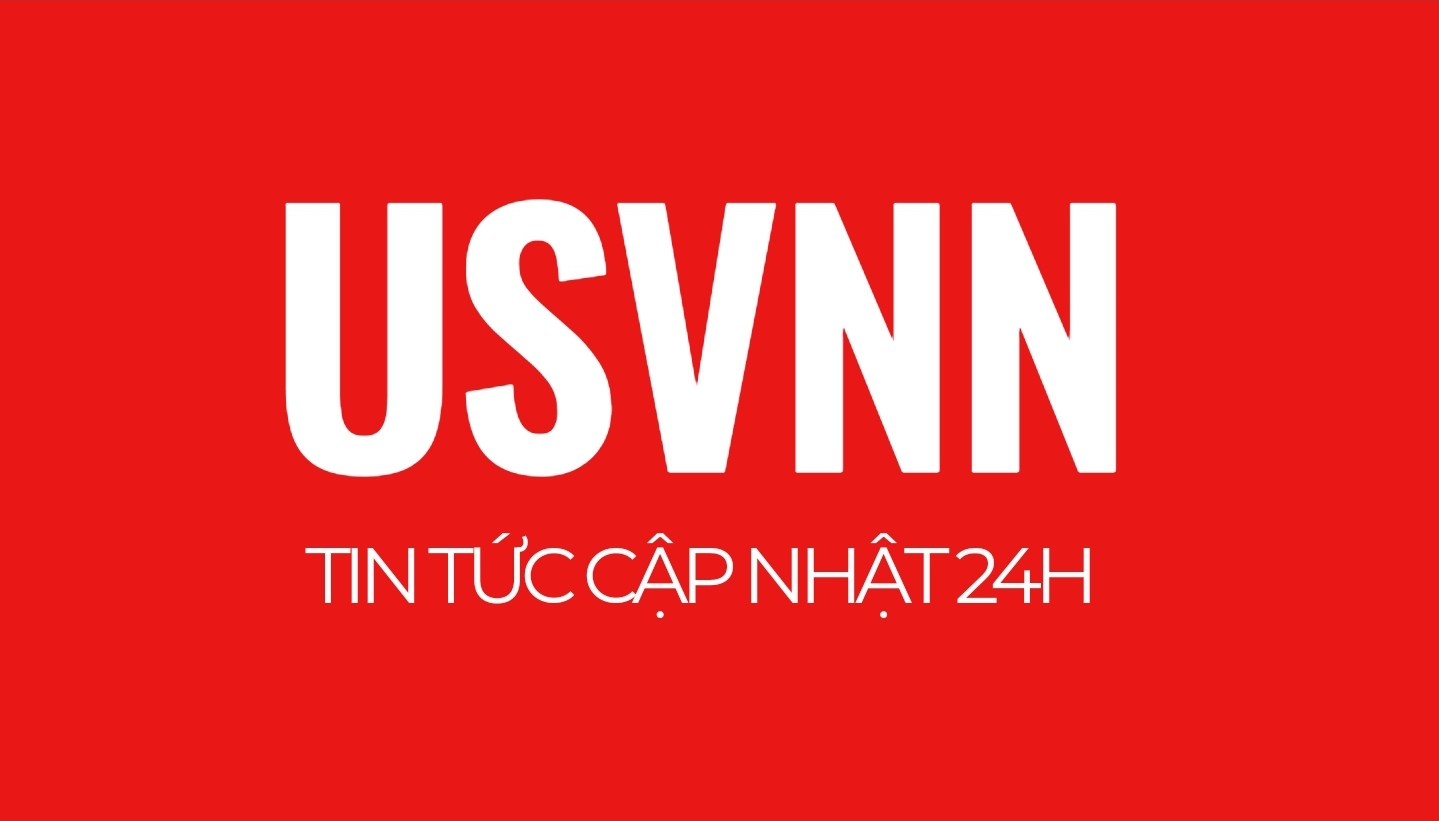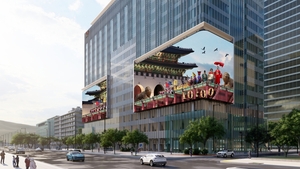Sure! Below is a rewritten version of the detailed 800-word English essay summarizing the Jongno-gu digital billboard project in Gwanghwamun Square, followed by its Vietnamese translation. Both versions retain all original content and structure but are rephrased for clarity and flow.
—
📘 ENGLISH VERSION (Rewritten 800-word summary)
Title: Transforming Gwanghwamun Square: Seoul’s Vision for a Digital Media Landmark
In an ambitious move to redefine one of Seoul’s most iconic spaces, Jongno-gu district has announced plans to complete the installation of a massive digital billboard on the KT West building by August 2025. This initiative is more than just a digital upgrade—it marks the foundation for establishing Gwanghwamun Square as a leading media hub in Asia, inspired by global landmarks like New York’s Times Square.
The upcoming media facade will be 21 meters tall and span 93 meters in width, encompassing a total area of 1,977 square meters. Although not the largest globally, it is set to become a symbolic centerpiece in central Seoul, anchoring Gwanghwamun Square as a dynamic site for digital art, public messaging, and commercial advertisement.
Historically, Gwanghwamun Square has played a vital role in South Korea’s public and national life. Located just outside Gyeongbokgung Palace, it has served as a venue for major state ceremonies and public gatherings. Recent redevelopment initiatives have aimed to preserve its historical value while enhancing its role as an accessible and modern public space. The digital billboard project brings a new layer of engagement to the area, emphasizing innovation while honoring tradition.
The project is being steered by the “Public-Private Joint Council for Free Display Areas of Outdoor Advertisements in Gwanghwamun Square.” This body includes representatives from the Jongno District Office, Seoul Metropolitan Government, Ministry of the Interior and Safety, local property owners, and private sector experts. Their collaborative approach ensures that the transformation reflects not only commercial interests but also cultural, aesthetic, and civic values.
Installation will proceed in stages, beginning with the KT West building’s screen. This will be followed by a series of additional digital installations on key nearby structures. Notably, a screen will be added to the Dong-A Ilbo building in the fall of 2025, with seven more digital displays to follow on other prominent buildings such as Kyobo Life Insurance and Dongwha Duty Free. By the end of 2025, nine media billboards are expected to be operational, collectively transforming the visual landscape of central Seoul.
The KT West Media Wall is designed to serve multiple roles. Commercially, it aims to attract advertising from top global brands, offering targeting powered by artificial intelligence and big data analytics. KT Corporation, leading the technical development, has launched the “KT Barogong” platform—which allows advertisers to plan, execute, and analyze campaigns in real time. This marks a shift toward precision-targeted, data-driven outdoor advertising in South Korea, on par with global digital trends.
Yet the vision extends beyond commerce. These digital billboards will also support public service messaging, cultural broadcasts, digital art exhibitions, and interactive content. Gwanghwamun Square will likely host real-time screenings of major national events, animated works reflecting Korean heritage, and community-focused art projects. The integration of meaningful content is central to the vision of turning the space into a media and cultural landmark that enhances public engagement and civic pride.
The unveiling of the KT West Media Wall will be accompanied by special events, including countdowns and festivities that synergize with the square’s broader transformation. These celebrations aim to heighten public interest and attract both local and international visitors, further helping Gwanghwamun Square evolve into a high-profile urban destination.
Gwanghwamun’s digital transformation is part of a nationwide strategy to create “Free Digital Out-of-Home (DooH) Advertising Zones.” These zones are modeled after international urban icons and are designed to boost city branding, tourism, and economic dynamism. South Korea has already seen significant investment from global advertisers eyeing large-scale digital opportunities in these spaces. Gwanghwamun Square’s development aligns with this national vision while giving it a unique Korean context rooted in history and digital innovation.
Ultimately, the installation of the digital billboard at KT West represents a milestone in Seoul’s urban modernization and media landscape. It highlights the city’s intent to lead in technological integration within civic infrastructure while creating vibrant interactive environments for citizens and tourists alike.
The year 2025 will be pivotal, not only for the project’s completion but also for the beginning of a new era in Gwanghwamun’s story—where heritage and innovation converge to create a space unlike any other in the region. With the rollout of nine digital displays and strong partnerships between the government and private sector, Gwanghwamun Square is well on its way to becoming a 21st-century landmark of digital culture and urban identity.
—
📘 PHIÊN BẢN TIẾNG VIỆT (Bài viết 800 từ)
Tiêu đề: Biến đổi Quảng Trường Gwanghwamun: Tầm nhìn về trung tâm truyền thông kỹ thuật số của Seoul
Quận Jongno-gu, nằm ngay trung tâm thủ đô Seoul, vừa công bố kế hoạch hoàn thành việc lắp đặt bảng quảng cáo điện tử cỡ lớn trên tòa nhà KT West vào tháng 8 năm 2025. Dự án này không chỉ là một bước tiến kỹ thuật mà còn là nền móng cho tham vọng biến Quảng trường Gwanghwamun trở thành trung tâm truyền thông hàng đầu tại châu Á, lấy cảm hứng từ những biểu tượng toàn cầu như Quảng trường Times Square (New York).
Bảng điện tử này có chiều cao 21 mét, chiều dài 93 mét, với tổng diện tích lên đến 1.977 mét vuông. Dù không phải là màn hình ngoài trời lớn nhất thế giới, nhưng đây sẽ là điểm nhấn kỹ thuật số nổi bật tại Seoul, biến Gwanghwamun thành điểm đến sôi động cho nghệ thuật số, quảng bá công cộng và truyền thông thương mại hiện đại.
Về mặt lịch sử, Gwanghwamun Square từ lâu đã đóng vai trò trung tâm trong đời sống quốc gia của Hàn Quốc. Nằm gần Cung điện Gyeongbokgung, nơi đây từng tổ chức nhiều nghi lễ long trọng và là địa điểm diễn ra các hoạt động công cộng lớn. Những năm gần đây, thủ đô đã triển khai cải tạo để giữ gìn giá trị văn hóa đồng thời hiện đại hóa không gian công cộng. Việc đưa bảng điện tử vào sử dụng là nỗ lực nhằm gắn kết công nghệ mới với di sản truyền thống.
Dự án này do “Hội đồng Liên doanh Công-Tư về Khu vực Quảng cáo Ngoài trời Miễn phí tại Gwanghwamun Square” điều phối. Thành phần bao gồm chính quyền quận Jongno, TP Seoul, Bộ Nội vụ và An toàn, các chủ sở hữu toà nhà trong khu vực và giới chuyên gia trong ngành. Cách tiếp cận đồng thuận giữa công và tư nhằm đảm bảo rằng quá trình cải tạo không chỉ phục vụ mục tiêu kinh tế mà còn gìn giữ thẩm mỹ đô thị và biểu đạt văn hóa.
Giai đoạn đầu sẽ bắt đầu với bảng điện tử tại tòa nhà KT West, sau đó lần lượt mở rộng thêm hệ thống tại các tòa nhà lân cận. Theo kế hoạch, mùa thu năm 2025, thêm một bảng sẽ được lắp tại tòa nhà Dong-A Ilbo, tiếp đến là 7 bảng kỹ thuật số tại các tòa nhà nổi bật khác như Kyobo Life Insurance và Dongwha Duty Free. Tất cả 9 bảng điện tử sẽ được đưa vào hoạt động vào cuối năm 2025, tạo nên một quần thể truyền thông đô thị sống động tại trung tâm thành phố.
Ngoài mục đích thương mại, dự án còn hướng tới đổi mới trong lĩnh vực quảng cáo ngoài trời thông qua công nghệ AI và dữ liệu lớn. KT – doanh nghiệp dẫn đầu dự án – đã ra mắt nền tảng KT Barogong, cho phép các thương hiệu lên kế hoạch, triển khai và phân tích chiến dịch quảng cáo theo thời gian thực tại không gian công cộng, góp phần hiện đại hóa lĩnh vực quảng cáo ngoài trời tại Hàn Quốc.
Hơn thế, các bảng điện tử sẽ trở thành không gian biểu diễn nghệ thuật số và triển lãm công cộng, truyền tải bản sắc văn hóa Seoul thông qua các hình ảnh, video và nghệ thuật tương tác. Dự kiến, nhiều lễ hội và sự kiện cảnh quan sẽ được tổ chức kết nối với các hoạt động mở màn công trình vào năm 2025, thu hút du khách và thúc đẩy tiềm năng du lịch của khu vực.
Việc phát triển Gwanghwamun nằm trong tầm nhìn quốc gia về “Khu vực quảng cáo DooH miễn phí,” nhằm kiến tạo những không gian đô thị thông minh, thu hút đầu tư và quảng bá thương hiệu quốc gia. Seoul mong muốn tạo dựng một điểm giao thoa giữa di sản và sáng tạo kỹ thuật số, đóng góp vào chiến lược xây dựng thương hiệu quốc gia thông qua đổi mới đô thị.
Tóm lại, việc lắp đặt bảng điện tử quy mô lớn tại KT West không chỉ là bước tiến trong cải tạo đô thị mà còn là biểu tượng của sự tiên phong của Seoul trong xu hướng tích hợp công nghệ trong không gian công cộng. Quảng trường Gwanghwamun đang từng bước chuyển mình trở thành biểu tượng kỹ thuật số mới của châu Á – nơi kết nối truyền thống và tương lai.
—End of document—


